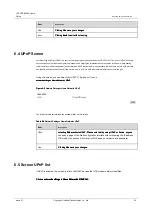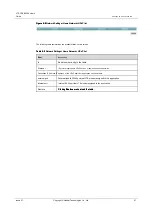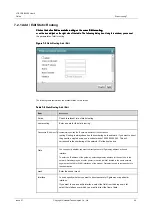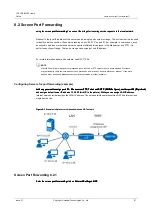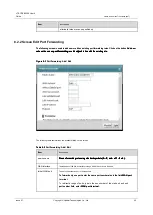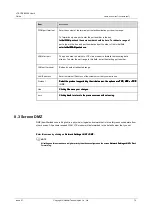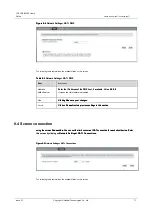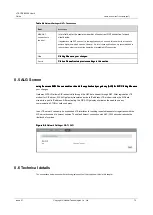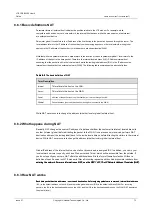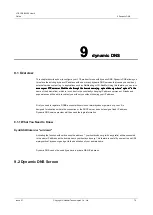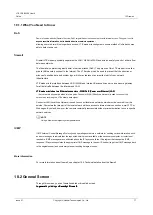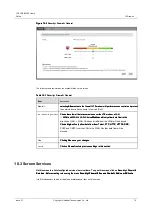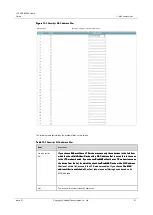
LTE CPE B2368 User's
Guide
8 Network Address Translation (NAT)
Issue 01
Copyright © Huawei Technologies Co., Ltd.
73
8.6.1 Basic definitions NAT
Parameter internal / external host indicates the position relative to the LTE modem. For example, while
computers and devices on your home network, the internal host devices, while the web servers on the Internet
are external host device.
Parameter global / local refers to the IP address of the host device in the packet as it passes through the router. The
local address refers to the IP address of the host device when moving a packet on the local network, while global
address is the IP address of the host device in the packet data stream identical WAN.
Note that while the parameter inside / outside refers to the location of the host parameter global / local refers to the
IP address of the host in the data packet. Therefore, the internal local address (ILA) IP Address internal host
assuming that the packet is still in the local network, while the inside global address (IGA) is the IP address of an
internal host identical, but the external network (WAN). The following table summarizes the above definition.
Table 8-5
The basic definition of NAT
Table 8-5
The basic definition of NAT
Term Description
Internal
This refers to the host on the LAN.
External
This refers to the host on the WAN.
Local
Address of the packet (source or destination) as it moves through the LAN.
Global
Packet address (source or destination) during its movement in the WAN.
While NAT never occurs to change the address (whether local or global) external host.
8.6.2 What happens during NAT
Basically, NAT changes the source IP address of a data packet from the customer (ie internal, local address) to
another (internal, global) before directing the packet to the WAN. Once a response is received, performs NAT
destination address (the inside global) back to the inside local address, before directing the visitors to the internal
device. While NAT never occurs to change the address (whether local or global) external host.
Global IP address of the internal host can be static or dynamic and is assigned ISP. In addition, you can in your
local network servers to specify, such as a Web server and Telnet, which will be accessible from the outside. If
you do not specify any servers, NAT offers the additional benefit in the form of firewall protection. Without a
definition of specific server will LTE modem to filter all incoming requests and thus hinder possible intruders from
entering the network. For more information on NAT, see the
RFC 1631, The IP Network Address Translator (NAT).
entering the network. For more information on NAT, see the
RFC 1631, The IP Network Address Translator (NAT).
entering the network. For more information on NAT, see the
RFC 1631, The IP Network Address Translator (NAT).
8.6.3 How NAT works
Each data packet has two addresses - source and destination. As for outgoing packets are concerned, internal local address
Each data packet has two addresses - source and destination. As for outgoing packets are concerned, internal local address
Each data packet has two addresses - source and destination. As for outgoing packets are concerned, internal local address
(ILA) is the default address on the LAN and the inside global address (IGA) is the default address WAN. For incoming
packets, the ILA is the destination address on the LAN, and the IGA is the destination address on the WAN. NAT translates
the private (local)


